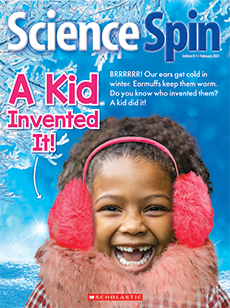November 2025
Time for Cranberries!
Academic Standards
Reading Objective:
Students will identify steps a family cranberry farm uses to harvest its crop.
Next Generation Science Standards:
K-LS1-1: Plants need light and water to grow.
K-ESS2-2: Plants, animals, and people can change the environment to meet their needs.
1-LS1-1: Parts of plants
K-2-ETS1: Engineering Design
Vocabulary:
bog, boom, waders
Use your Science Spin to find the best answer to each question.
1. Where do cranberries grow?
in a bog
2. What do you fill the bog with to make cranberries float?
water
3. What does Lexie’s dad use to scoop up the cranberries?
the boom
4. Would you take the cranberry plunge? Draw a picture.
© Go online to print or project the Reading Checkpoint.
- Experts think cranberries were served at the first Thanksgiving, but they’re not sure how they were served.
- Cranberries are native to North America. So are blueberries and Concord grapes.
- Native Americans used cranberries as a healthy food, to make medicines, and even to color their clothes red.
Materials: 1 bowl of water and 2 oranges per experiment; pencils; copies of the skill sheet
Overview: Like a cranberry, an orange floats because it has air inside its peel. But will an orange float without its peel? Experiment and find out! Do this as a class demo, or have kids try it at workstations. You’ll need a bowl of water and 2 oranges for each experiment group.
Directions:
- If this is a class demo, get one clear bowl of water. Have 2 oranges, both with their peels still on. If kids will do this at their workstations, do this setup at each workstation. (You could peel 1 orange for them or not.)
- Remind students they read that cranberries floated on water. Why? Cranberries have air trapped inside.
- Show them an orange. Its peel traps air inside. Predict whether it will float and try it.
- Have students predict whether an orange without its peel will float. Send them to their workstations to test, or peel an orange in front of them and try to float it.
- Record results on the skill sheets. If there’s time, kids can talk about what other fruits they think will float—or not!
